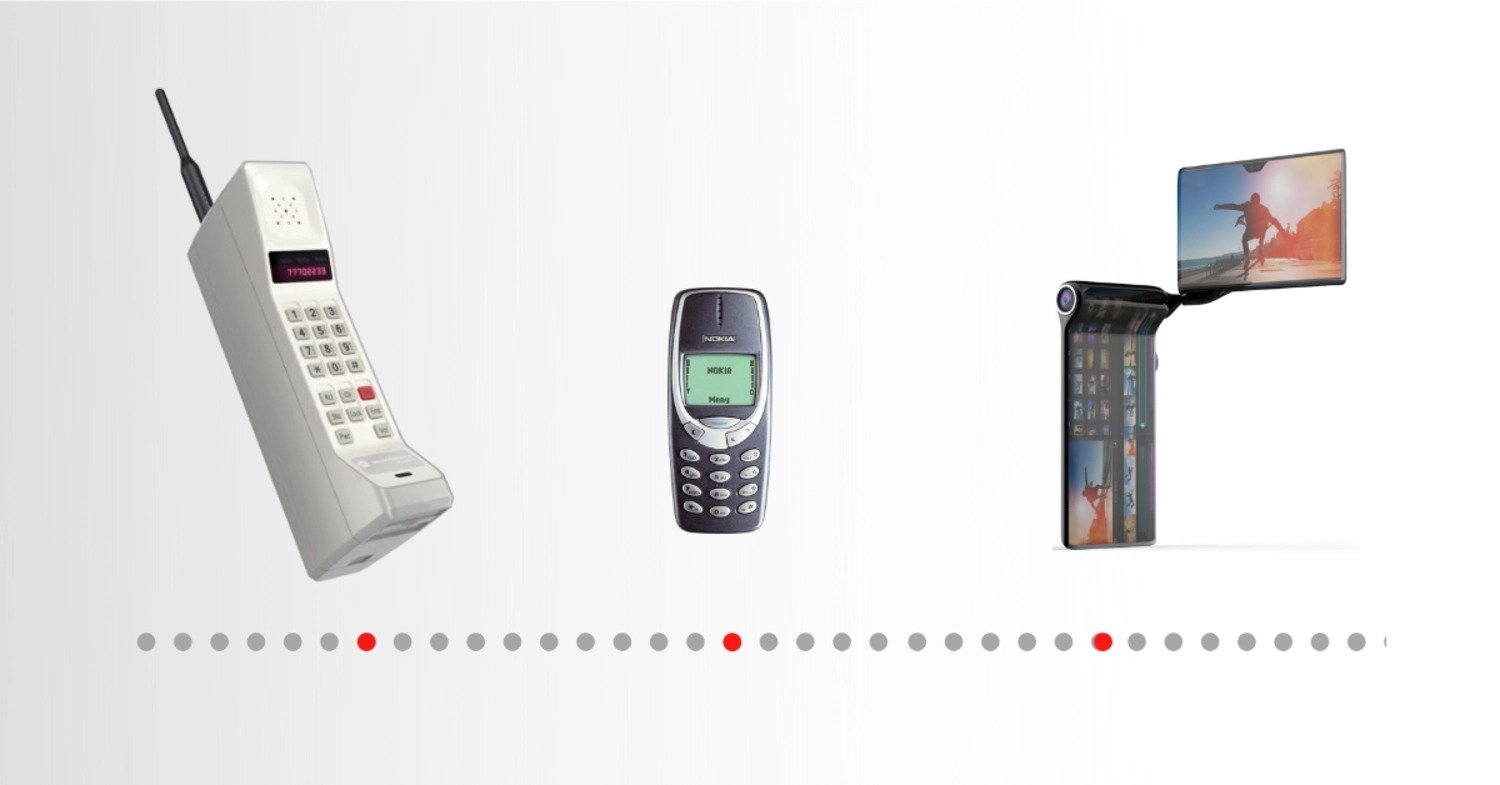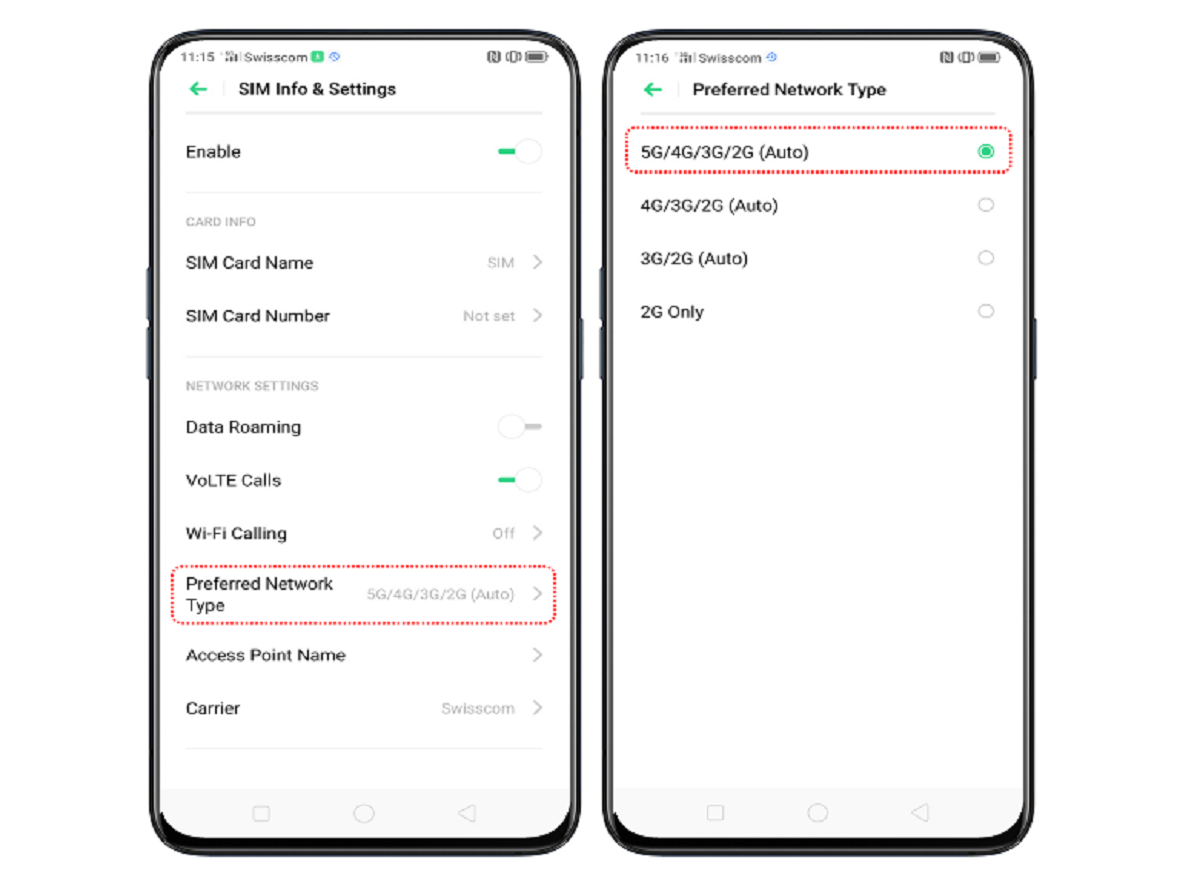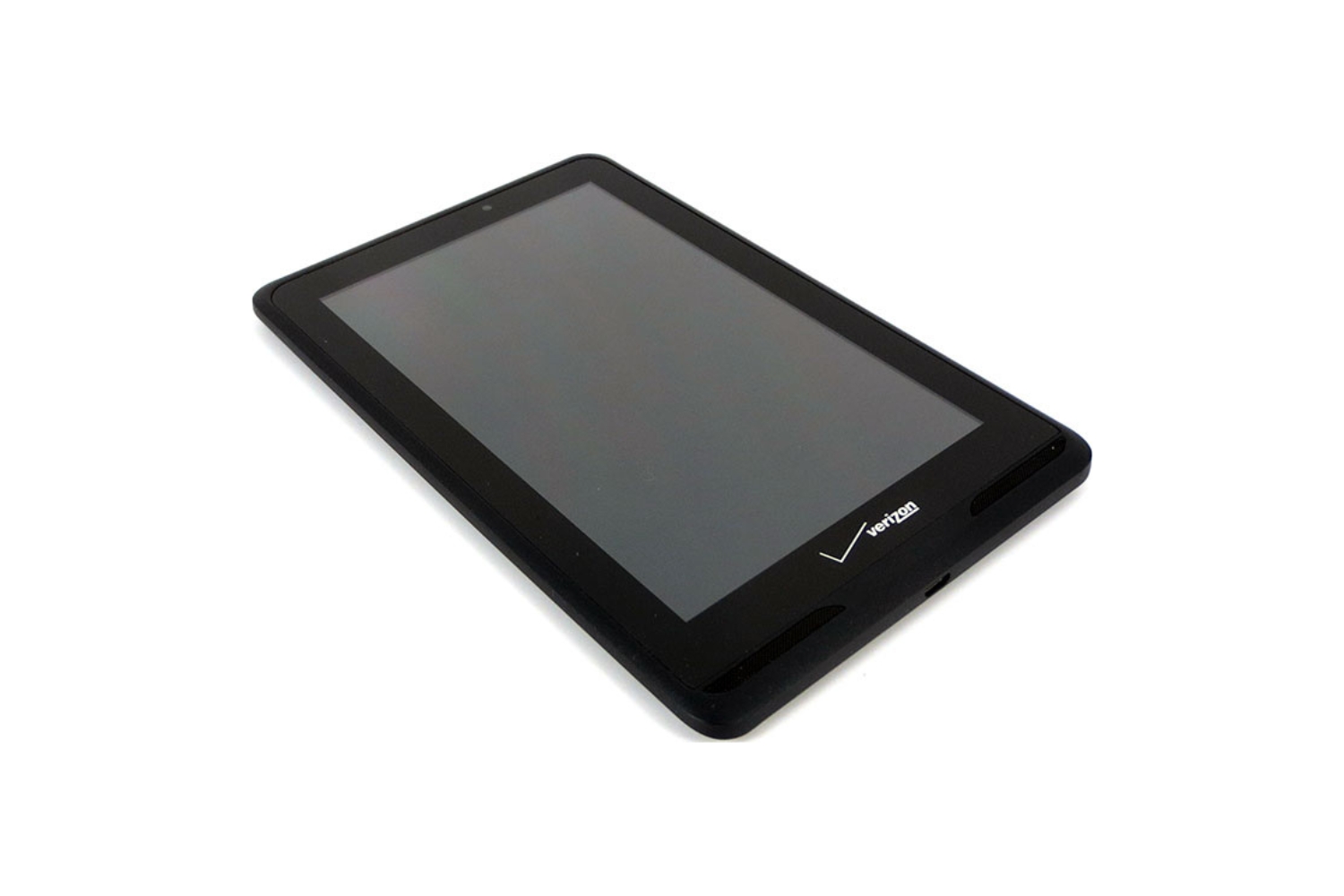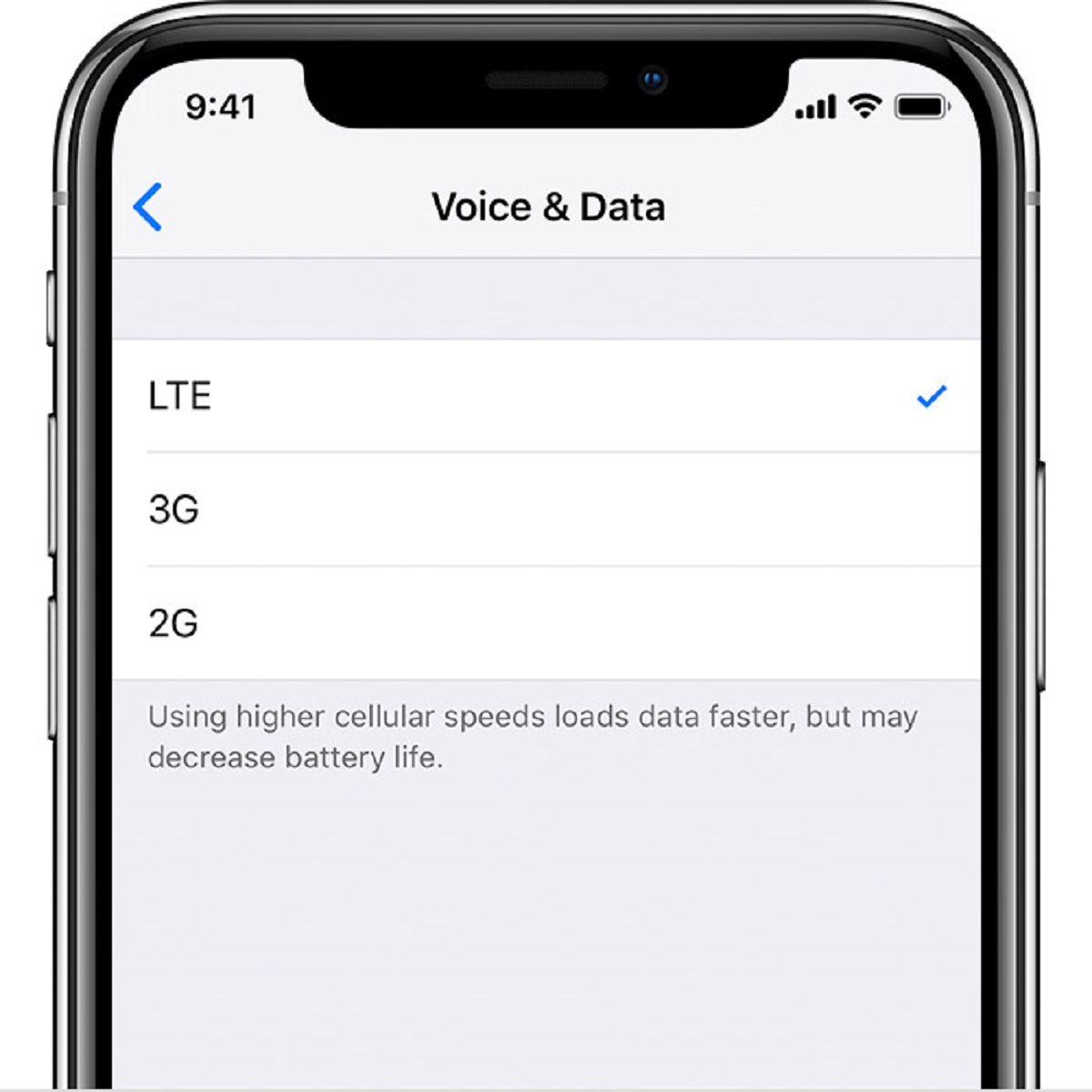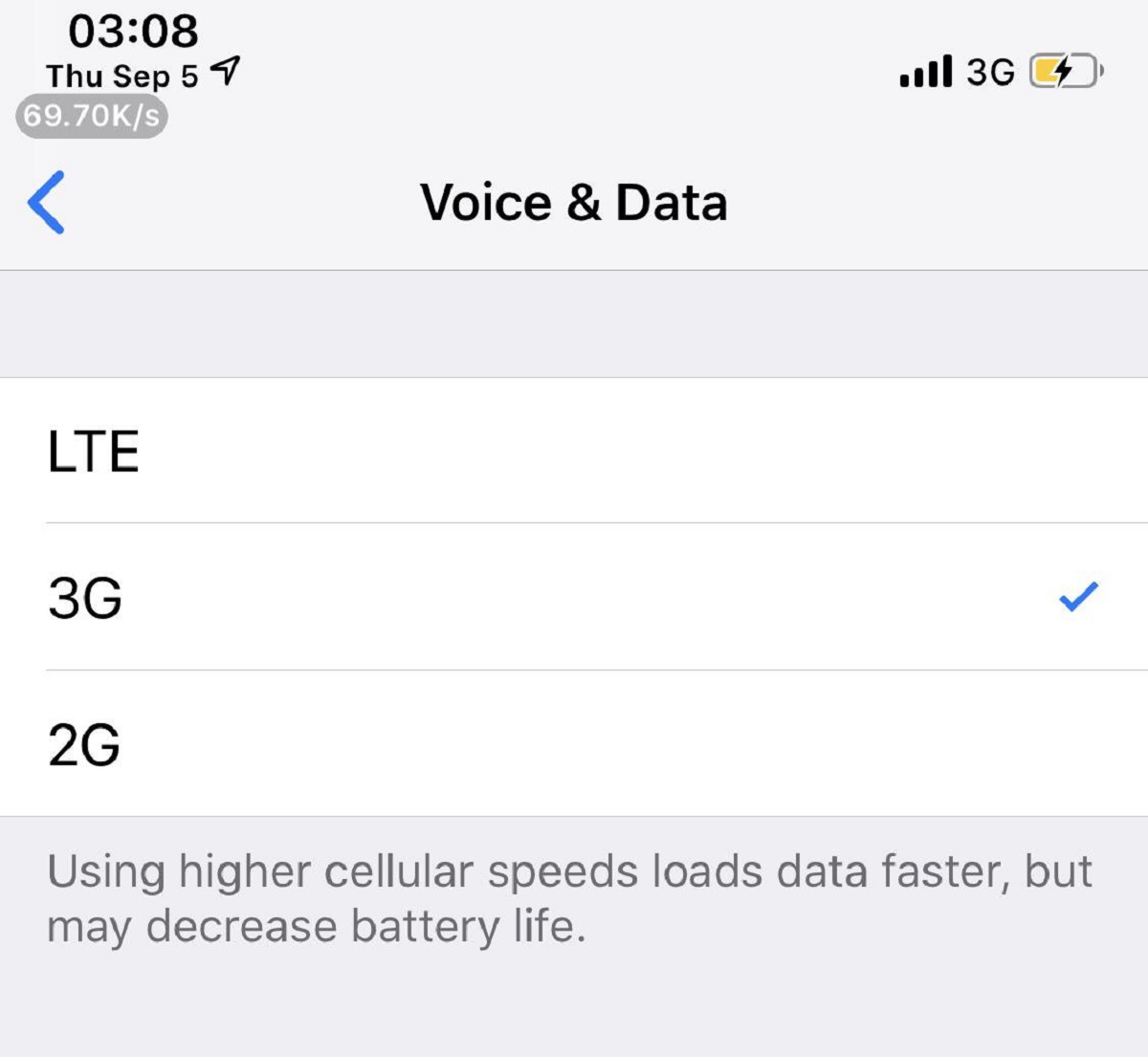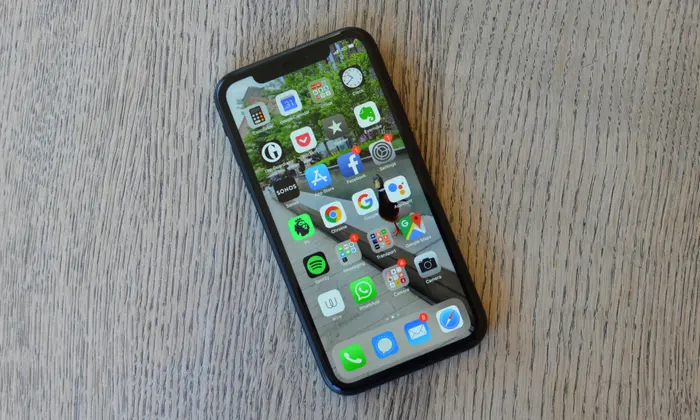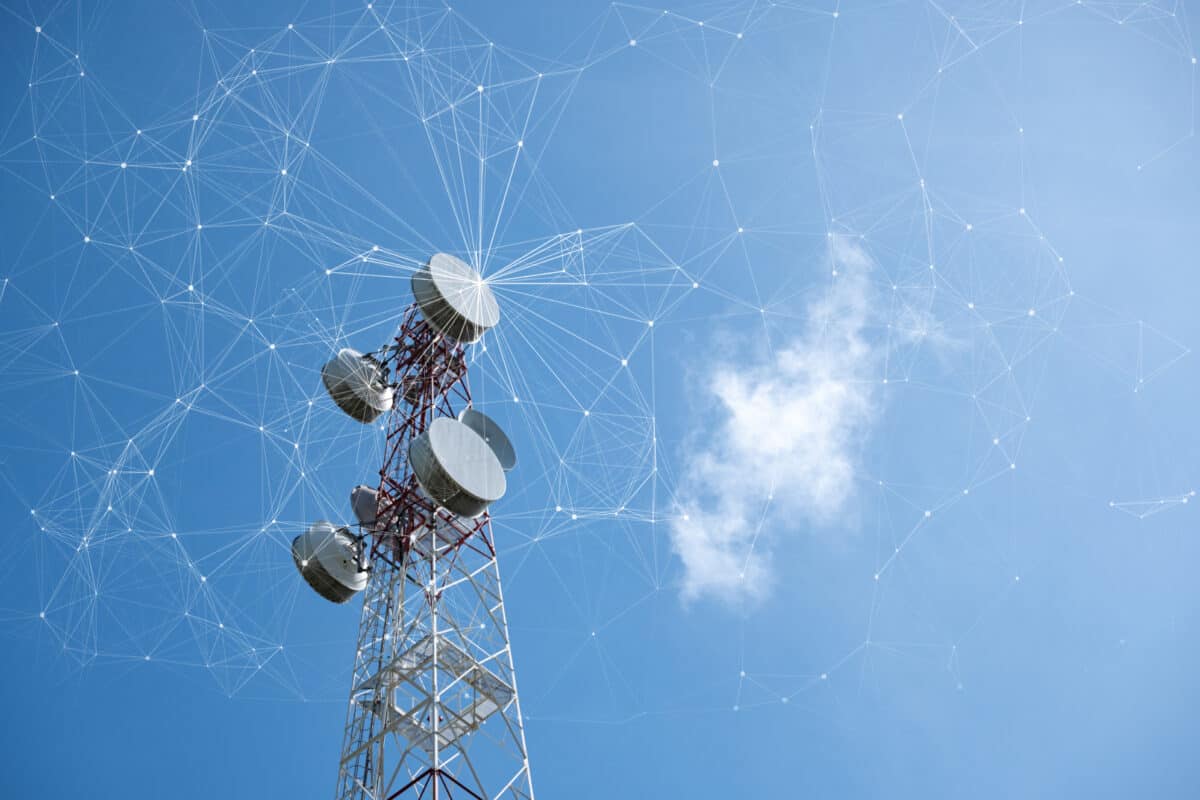Introduction
Over the past few decades, the world has witnessed a remarkable transformation in mobile communication technology. From the early days of basic voice calls to the seamless and lightning-fast data connectivity we experience today, mobile networks have expanded and evolved at an unprecedented pace. One of the most significant advancements in this field has been the introduction of 4G technology.
4G, short for Fourth Generation, refers to the fourth iteration of mobile network standards. It builds upon the capabilities of its predecessors, such as 3G and 2G, to deliver faster data transfer speeds, lower latency, and improved overall network performance. With the advent of 4G, users can enjoy high-quality video streaming, lag-free online gaming, and quick downloads on their mobile devices.
The journey to the development and deployment of 4G technology has been a fascinating one, marked by comprehensive research, collaboration among industry leaders, and the introduction of groundbreaking standards. This article aims to explore the history and impact of 4G technology, shedding light on its emergence, global adoption, key features, and the changes it has brought to society.
It’s important to note that 4G is not a single technology or protocol but rather a set of standards that define how mobile networks should operate to provide enhanced connectivity. These standards are established by international organizations and industry associations, paving the way for a seamless global mobile network experience.
As we delve into the origins and advancements of 4G technology, it becomes clear that it has revolutionized the way we communicate, work, and access information. The introduction of 4G has enabled us to stay connected and enjoy a wide array of digital services on our smartphones and mobile devices, making it an integral part of our everyday lives.
What is 4G?
4G, also known as Fourth Generation, refers to the fourth iteration of mobile network standards. It represents a significant leap forward in terms of mobile communication technology, offering faster data transfer speeds, lower latency, and enhanced network performance compared to its predecessors.
At its core, 4G technology is designed to provide an optimized user experience, enabling seamless connectivity and high-speed data transmission on mobile devices. It allows users to access a wide range of digital services, including video streaming, online gaming, and cloud-based applications, with minimal lag and interruptions.
One of the key features of 4G is its ability to support high-speed data transfer. With download and upload speeds ranging from tens to hundreds of megabits per second, 4G networks enable users to quickly download large files, stream high-definition videos, and browse the internet effortlessly.
In addition to faster speeds, 4G technology also offers reduced latency. Latency refers to the time it takes for data to travel from the source to the destination. With lower latency, users experience minimal delay when interacting with online applications and services. This is particularly crucial for real-time communication tools like video conferencing and online gaming, where even a slight delay can significantly impact user experience.
Another notable aspect of 4G is its improved network capacity. The technology employs advanced modulation techniques and more efficient use of available frequency spectrums, allowing mobile operators to accommodate a larger number of users and devices on their networks simultaneously. This increased capacity enables better network performance, even in densely populated areas.
Furthermore, 4G networks support enhanced security measures to protect user data and ensure the integrity of communications. The technology incorporates robust encryption algorithms and strict authentication protocols to safeguard user privacy and prevent unauthorized access to sensitive information.
Overall, 4G technology has transformed the way we connect and communicate. It has opened up new possibilities for businesses, individuals, and society as a whole, enabling us to leverage the full capabilities of our mobile devices and access a wide range of digital services with unprecedented speed and reliability.
The Evolution of Mobile Networks
The development of mobile networks has been a remarkable journey, marked by continuous advancements in technology and the increasing demand for faster and more reliable communication. To better understand the significance of 4G technology, it is essential to explore the evolution of mobile networks that led to its emergence.
The first-generation mobile networks, commonly referred to as 1G, were introduced in the 1980s. These networks primarily provided analog voice calls and had limited coverage. However, they laid the foundation for mobile communication and sparked the transformational potential of wireless connectivity.
In the 1990s, the second-generation networks, known as 2G, replaced analog with digital transmission, resulting in significant improvements in call quality and network capacity. 2G networks also introduced basic data services such as text messaging, paving the way for the mobile revolution.
As the demand for data connectivity grew, the third-generation networks, or 3G, emerged in the early 2000s. 3G networks enabled faster internet browsing, email access, and multimedia services, revolutionizing the way people used their mobile devices. However, 3G still had limitations when it came to bandwidth and speed, leading to the need for further advancements.
This led to the development of the fourth-generation networks, or 4G, which represented a significant leap forward in mobile communication technology. 4G networks were designed to address the growing data demands of users and provide enhanced performance and connectivity.
4G technology offered faster data transfer speeds than its predecessors, making it ideal for bandwidth-intensive applications such as video streaming and online gaming. It introduced technologies like Long-Term Evolution (LTE), which optimized data transmission and improved network efficiency.
The evolution of mobile networks did not stop with 4G. The industry has been actively working on the development of 5G networks, the fifth generation of mobile communication technology. 5G promises even faster speeds, ultra-low latency, and massive device connectivity, heralding a new era of connectivity and enabling transformative technologies such as Internet of Things (IoT) and autonomous vehicles.
The journey from 1G to 4G and beyond has been driven by technological innovation, industry collaborations, and the ever-increasing demands of users. Each generation of mobile network has brought us closer to a world of seamless connectivity, empowering individuals, transforming businesses, and revolutionizing society as a whole.
The Emergence of 4G
The emergence of 4G technology can be traced back to the early 2000s when industry leaders and standardization bodies recognized the need for a more advanced mobile network standard to cater to the growing demand for data-intensive applications and services.
Efforts to develop 4G technology gained momentum in the mid-2000s, with international organizations and industry associations collaborating on defining the technical specifications and standards for the new generation of mobile networks.
One of the key contributors to the development of 4G was the International Telecommunication Union (ITU), a specialized United Nations agency responsible for coordinating international telecommunications standards. The ITU played a crucial role in setting the initial framework for 4G technology, outlining the requirements and performance targets for the new standard.
In 2008, the ITU announced the official standards for 4G, known as the International Mobile Telecommunications-Advanced (IMT-Advanced) standard. The IMT-Advanced standard defined the technical specifications and capabilities of 4G networks, including a minimum peak download speed of 100 megabits per second (Mbps) for high mobility scenarios and 1 gigabit per second (Gbps) for low mobility scenarios.
Following the announcement of the IMT-Advanced standard, mobile operators and telecommunications equipment manufacturers started working on implementing and deploying 4G networks. The primary technology used in 4G networks is Long-Term Evolution (LTE), which provides high-speed data transmission and improved network efficiency.
Commercial deployments of 4G networks began in various countries around the world in the late 2000s and early 2010s. South Korea became one of the first countries to launch 4G services commercially in 2009, followed by the United States, Japan, and Sweden.
The deployment of 4G networks brought significant advancements in terms of speed, capacity, and connectivity. Users could experience faster download and upload speeds, enabling them to stream high-definition videos, engage in real-time video calls, and access bandwidth-intensive applications on their mobile devices.
With the emergence of 4G, mobile operators and device manufacturers also introduced a new generation of smartphones and tablets that were specifically designed to take advantage of the enhanced capabilities of the network. These devices came equipped with larger screens, improved processors, and better multimedia capabilities.
Overall, the emergence of 4G technology represented a significant milestone in the evolution of mobile networks. It provided users with unprecedented data speeds and network performance, setting the stage for the next wave of digital innovation and transforming the way we use our mobile devices.
The First 4G Standards
When it comes to the development of 4G technology, several key standards played a pivotal role in defining the technical specifications and capabilities of the new generation of mobile networks.
One of the first 4G standards to emerge was Long-Term Evolution (LTE), developed by the Third Generation Partnership Project (3GPP). LTE aimed to provide higher data transfer rates and improved network efficiency compared to its predecessors, enabling seamless connectivity and a wide range of advanced services.
LTE introduced a packet-based network architecture, which allowed for more efficient data transmission and lower latency. It utilized advanced modulation techniques, such as Orthogonal Frequency Division Multiplexing (OFDM), to divide radio frequency resources into multiple subcarriers, enabling greater data capacity and better signal quality.
Another significant 4G standard was WiMAX (Worldwide Interoperability for Microwave Access), developed by the Institute of Electrical and Electronics Engineers (IEEE). WiMAX aimed to provide wireless broadband access over a wide area, delivering high-speed data connectivity in both fixed and mobile environments.
WiMAX utilized a wireless networking technology based on the IEEE 802.16 standard, which specified the physical and media access control layers for broadband wireless communication. It offered comparable data transfer rates to LTE and enabled operators to provide high-speed internet access to areas without wired infrastructure.
While WiMAX initially gained traction in some regions, such as North America, LTE emerged as the dominant 4G standard globally due to its widespread adoption and support from major mobile operators and device manufacturers.
The first version of the LTE standard, known as LTE Release 8, was finalized in 2008 by the 3GPP. It provided a foundation for the deployment of initial 4G networks and offered data transfer speeds of up to 100 Mbps for high mobility scenarios and 1 Gbps for low mobility scenarios, as defined by the IMT-Advanced standard.
Subsequent releases of LTE, such as LTE Advanced (Release 10) and LTE Advanced Pro (Release 13), continued to enhance the performance and capabilities of 4G networks. These releases introduced features like Carrier Aggregation, which allowed the aggregation of multiple frequency bands to increase data speeds, and Enhanced Multimedia Broadcast Multicast Service (eMBMS), which enabled efficient delivery of multimedia content to multiple users simultaneously.
Overall, the development of the LTE and WiMAX standards paved the way for the commercial deployment of 4G networks worldwide. These standards set the foundation for the rapid growth of mobile data services, transforming the way we connect, communicate, and access information on our mobile devices.
Commercial Launches of 4G Networks
The commercial launches of 4G networks marked a significant milestone in the evolution of mobile communication technology, bringing high-speed data connectivity to users around the world. Countries across the globe began rolling out their 4G networks, ushering in a new era of mobile connectivity.
South Korea was one of the first countries to commercially launch 4G services. In 2009, SK Telecom, one of the leading mobile operators in South Korea, introduced its 4G network based on the LTE standard. The launch of 4G in South Korea was a game-changer, providing users with blazing-fast data speeds and catalyzing the growth of mobile data services in the country.
The United States also played a significant role in the commercialization of 4G networks. In 2010, Sprint Nextel became the first major U.S. carrier to roll out its 4G network, branded as “Sprint 4G.” It utilized the WiMAX standard and offered users high-speed data connectivity in select cities across the country.
Following Sprint’s launch, other major mobile operators in the United States, including Verizon Wireless and AT&T, began deploying their 4G networks based on the LTE standard. Verizon Wireless launched its 4G LTE network in 2010, becoming the first carrier in the country to offer nationwide coverage.
By 2012, 4G networks had gained significant momentum globally. Mobile operators in countries such as Japan, Sweden, Germany, and Australia started commercially deploying their respective 4G networks, providing users with lightning-fast data speeds and unlocking new possibilities for mobile connectivity.
The commercial launches of 4G networks not only improved the overall user experience but also fueled the growth of mobile data usage. With faster download and upload speeds, users could easily stream high-definition videos, engage in video calls, and access bandwidth-intensive applications on their smartphones and other mobile devices.
As the demand for 4G services grew, mobile device manufacturers responded by introducing a new generation of smartphones and tablets that were equipped with 4G capabilities. These devices were designed to take full advantage of the enhanced connectivity provided by 4G networks, offering users a seamless and immersive mobile experience.
The commercialization of 4G networks also spurred innovation and economic growth. It facilitated the development of new mobile applications, services, and industries, creating opportunities for businesses and entrepreneurs to leverage the power of high-speed mobile connectivity.
Overall, the commercial launches of 4G networks paved the way for a new era of mobile communication and connectivity. It revolutionized the way people used their mobile devices and opened up a world of opportunities for digital innovation and economic development.
Global Adoption of 4G Technology
The adoption of 4G technology quickly spread around the globe, transforming the way people connect and communicate. Countries across different continents embraced 4G networks, leading to widespread adoption and exponential growth in mobile data usage.
South Korea, often known as an early adopter of technology, witnessed rapid adoption of 4G networks. The availability of high-speed data connectivity revolutionized the country’s digital landscape, with users embracing mobile services and applications like never before.
The United States also experienced significant adoption of 4G technology. As major mobile operators deployed their 4G networks, users enjoyed faster data speeds and superior network performance, fueling the growth of mobile data usage.
Notably, China played a crucial role in the global adoption of 4G. With the world’s largest population, the widespread deployment of 4G networks in China was a monumental undertaking. Mobile operators in the country invested heavily in network infrastructure, and as a result, China became a leading market for 4G technology.
Europe witnessed a gradual but steady adoption of 4G technology. Countries like Sweden, Germany, and the United Kingdom saw significant growth in 4G network coverage and user adoption. The high-speed data connectivity enabled users to enjoy seamless streaming, online gaming, and other data-intensive applications.
4G technology also gained traction in developing countries where mobile connectivity played a crucial role in bridging the digital divide. In regions such as Africa, Latin America, and parts of Southeast Asia, the adoption of 4G networks brought access to high-speed internet and digital services to previously underserved communities.
The global adoption of 4G technology had a profound impact on various industries. The rise of mobile applications and services that leverage the capabilities of 4G networks transformed sectors such as e-commerce, entertainment, and education. Businesses quickly adapted to this new landscape, embracing mobile-first approaches and leveraging the power of high-speed data connectivity to reach and engage with consumers.
Furthermore, the adoption of 4G technology contributed to social and economic development in many countries. It facilitated digital inclusion, enabling individuals and communities to access information, resources, and services that were previously inaccessible. The capabilities brought forth by 4G networks empowered individuals, driving entrepreneurship and innovation in various sectors.
As the adoption of 4G technology continues to expand worldwide, it lays the foundation for the next generation of mobile communication technology – 5G. The lessons learned and the benefits reaped from the widespread adoption of 4G are invaluable, setting the stage for a future where connectivity becomes even faster, more reliable, and more transformative.
Key Advancements and Features of 4G
4G technology brought a plethora of advancements and features that revolutionized mobile communication and connectivity. These key advancements and features played a pivotal role in enhancing the user experience and propelling the widespread adoption of 4G networks.
One of the most notable advancements of 4G was the significant increase in data transfer speeds. With download speeds ranging from tens to hundreds of megabits per second, users could enjoy seamless streaming of high-definition videos, fast downloads, and smooth web browsing on their mobile devices.
Low latency was another critical feature of 4G networks. This reduced delay in data transmission allowed for real-time communication and lag-free experiences, making activities such as video conferencing and online gaming more immersive and enjoyable.
4G networks also offered improved network capacity, enabling a larger number of users and devices to connect simultaneously without sacrificing performance. This enhanced capacity was achieved through technologies like advanced modulation techniques and spectral efficiency improvements.
Carrier Aggregation, a key feature of 4G, allowed for the aggregation of multiple frequency bands to boost data speeds. This meant that users could benefit from wider bandwidth, resulting in faster and more stable connections, especially in areas with congested network conditions.
Another significant advancement of 4G was the support for Voice over LTE (VoLTE). Traditionally, voice calls were handled separately on 2G or 3G networks, but with VoLTE, voice calls were transmitted as data packets over the 4G network, delivering high-quality voice calls and freeing up network resources for data services.
4G networks also introduced enhanced security measures to protect user data and privacy. Robust encryption algorithms and strict authentication protocols were implemented to ensure secure communication and prevent unauthorized access to sensitive information.
Thanks to its compatibility with IP-based networks, 4G technology facilitated the seamless integration of mobile networks with the internet, unlocking a world of possibilities for connected services and Internet of Things (IoT) applications.
Furthermore, 4G networks enabled the convergence of various services and technologies. It bridged the gap between fixed-line internet and mobile connectivity, blurring the boundaries between different devices and networks and providing users with a consistent and uninterrupted digital experience.
In summary, key advancements and features of 4G technology include faster data transfer speeds, low latency, improved network capacity, carrier aggregation, Voice over LTE (VoLTE), enhanced security, seamless integration with IP-based networks, and convergence of services. Collectively, these advancements have transformed how we connect, communicate, and consume data on our mobile devices, shaping the digital landscape and opening up new possibilities for innovation and connectivity.
4G and its Impact on Society
4G technology has had a profound impact on society, transforming the way we live, work, and interact with the world. Its widespread adoption and the availability of high-speed mobile connectivity have brought about significant changes in various aspects of society.
One of the most notable impacts of 4G is the accessibility of information and services. With faster data transfer speeds and seamless connectivity, people can easily access a wealth of information, educational resources, and digital services right at their fingertips. This has democratized knowledge and empowered individuals to learn, explore, and stay informed regardless of their geographical location.
The rise of 4G has also revolutionized industries such as entertainment and media. Streaming services like Netflix, YouTube, and Spotify have gained immense popularity, allowing users to enjoy high-quality video and audio content on their mobile devices. Moreover, the seamless connectivity offered by 4G has paved the way for interactive gaming experiences, virtual reality applications, and immersive media consumption.
In addition to entertainment, 4G has greatly impacted the business world. It has facilitated the growth of mobile commerce (m-commerce) and online business transactions. With secure and reliable 4G connectivity, businesses can engage with customers, process transactions, and deliver services on a global scale. 4G has also enabled the rise of remote work and flexible working arrangements, allowing employees to stay connected and collaborate regardless of their physical location.
The healthcare sector has also experienced significant transformations due to 4G technology. With robust data connectivity, healthcare professionals can access electronic medical records, consult with specialists remotely, and implement telemedicine solutions. This has enhanced the efficiency of healthcare delivery and improved access to medical services, particularly in remote or underserved areas.
4G technology has also had a positive social impact by fostering connectivity and bridging the digital divide. It has provided opportunities for underserved communities to access the internet, educational resources, and online services. This accessibility has opened avenues for economic empowerment, entrepreneurship, and social inclusion.
Furthermore, 4G has played a pivotal role in emergency situations and disaster management. During crisis situations, 4G networks have proven crucial in facilitating communication, coordinating relief efforts, and disseminating critical information to affected communities.
Overall, the impact of 4G technology on society has been transformative. It has brought about advancements in communication, connectivity, and access to information, empowering individuals, and driving innovation in various sectors. As we continue to embrace the benefits of 4G, it sets the stage for further progress and sets the foundation for the next generation of mobile connectivity – 5G.
Conclusion
The development and widespread adoption of 4G technology have revolutionized mobile communication and connectivity, unleashing a new era of high-speed data transfer, seamless connectivity, and transformative possibilities. Over the years, 4G networks have become an integral part of our lives, powering our smartphones, enabling us to access a wealth of digital services, and transforming the way we connect, communicate, and consume information.
From its emergence as the Fourth Generation of mobile networks to its global adoption, 4G technology has brought significant advancements and features that have reshaped industries, empowered individuals, and bridged the digital divide. The improved data transfer speeds, low latency, enhanced network capacity, and other key features of 4G have paved the way for immersive entertainment experiences, seamless business transactions, accessible healthcare services, and social inclusion.
As we reflect on the impact of 4G technology, it becomes evident that it has fundamentally transformed the world of communication and connectivity. It has opened up new possibilities for businesses, enabling digital transformation and global reach. It has provided individuals with immediate access to information, education, and services, empowering them to learn, connect, and contribute to society.
Looking ahead, the legacy of 4G will continue to shape the future of mobile communication as the world transitions to the next generation of connectivity – 5G. The advancements and lessons learned from 4G lay the foundation for the seamless integration of technologies, the Internet of Things, and the realization of smart cities and autonomous vehicles.
As we embrace the benefits of 4G and anticipate the possibilities of 5G, it is clear that mobile communication technology will continue to evolve and redefine how we interact with the world. The journey from 1G to 4G has been marked by innovation, collaboration, and a relentless pursuit of faster, more efficient, and more connected networks. With the ever-increasing demands of a digital world, the future holds endless opportunities for connectivity, transforming societies, industries, and human experiences.







